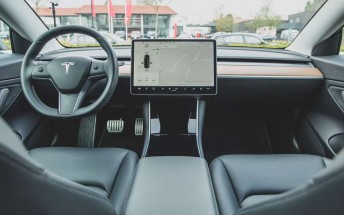Realme GT Neo 3 150W in for review
The Realme GT Neo 3 which was launched in China in March and began its global journey last week with India has now landed at our office for a full review. The biggest highlight of the GT Neo 3 is the 150W UltraDart charging, although there's an 80W variant as well, packing a bigger battery.
Both models are offered in three colors - Asphalt Black, Sprint White, and Nitro Blue. And it's the last one that we have with us, which is also called the Le Mans version in China.
The Realme GT Neo 3 150W comes in a black-colored retail box, including a SIM card ejector tool, some paperwork, a USB-C cable, a protective case, and, surprisingly, a 160W charger.

The GT Neo 3 is built around a 6.7" 120Hz FullHD+ 10-bit AMOLED screen, protected by Gorilla Glass 5. It has a fingerprint reader underneath for biometric authentication and heart rate monitoring and a punch hole at the top for the 16MP selfie camera. You can see that it's aligned in the center, which is a first for Realme since its previous smartphones came with notches or off-center punch holes.

Moving on to the back, we get a rectangular island housing three cameras - 50MP primary (with OIS), 8MP ultrawide, and 2MP macro. The module's plate is glossy and made of plastic, making it prone to fingerprint smudges and scratches. Besides, the protruding camera at the top also accumulates dust, which is not the case with the other two shooters sitting flush with the bump. However, that camera bump makes the phone wobble on flat surfaces, and the bundled case doesn't really fix it.

That said, the Realme GT Neo 3's rear panel is covered with a fingerprint-resistant AG glass, and our Nitro Blue version has a fine pattern visible upon close inspection. It also has two stripes spanning the phone's length, interrupted by the camera island at the top, and the Realme logo and the "Dare To Leap" tagline at the bottom.
Realme calls this a Racing Stripe Design, which represents performance and speed, and is also a tribute to the drivers of the Le Mans races.

The Realme GT Neo 3 has the volume buttons on its left-side frame and the power key on the right. These offer nice feedback, and the textured power button adds to the overall experience.


Realme GT Neo 3's volume keys and power button have nice feedback
We quite like the overall design of the Realme GT Neo 3. It's built well and is lighter and thinner than its predecessor - GT Neo 2 - which got unwieldy at times due to its weight and width. However, we'd have liked the GT Neo 3 to have a bit more curvature for a more comfortable experience.
Enough about the design. Let's talk about the Realme GT Neo 3's innards. The smartphone is powered by the Dimensity 8100 SoC and runs Android 12-based Realme UI 3.0 out of the box. The 150W model comes in a single 12GB RAM + 256GB storage configuration, but the 80W version has two more options - 8GB/128GB and 8GB/256GB.

The 150W variant packs a 4,500 mAh dual-cell battery, advertised to go from flat to 50% in 5 minutes. It also has an UltraDart Adaptive Dual Chipset on board to provide a stable and consistent charging speed and keep the battery at an optimal temperature level.
The 80W model, on the other hand, has a 5,000 mAh dual-cell battery under the hood, advertised to charge from 0% to 50% in 12 minutes with the bundled 80W adapter.
Realme told us that the 150W version packs a smaller battery because the proprietary charging technology they are using currently only supports 4,500 mAh batteries at max. The 80W tech doesn't have any such limitation, so they offered a larger battery to the users with the 80W GT Neo 3.

The rest of the Realme GT Neo 3's highlights include a stainless steel vapor cooling system, 5G connectivity, NFC, dual speakers, Dolby Atmos support, Hi-Res Audio certification, and USB-C.
The smartphone comes with an X-axis linear motor which offers great haptic feedback, and there's also a dedicated display processor that enables up to 120 FPS of gameplay (Realme says only PUBG and League of Legends are currently supported).
Our Realme GT Neo 3 150W review is underway, so stick around to find out if it is worth buying.
Related
Reader comments
- Dan
- 30 May 2022
- QGM
IDK what's happening but the review is taking too long to come out.
- StelP
- 29 May 2022
- 3Ag
Is there an fm radio?
- MasEnha
- 29 May 2022
- yMH
Impressive, no full review till Today.








 Huawei
Huawei Samsung
Samsung Xiaomi
Xiaomi Apple
Apple Xiaomi
Xiaomi


